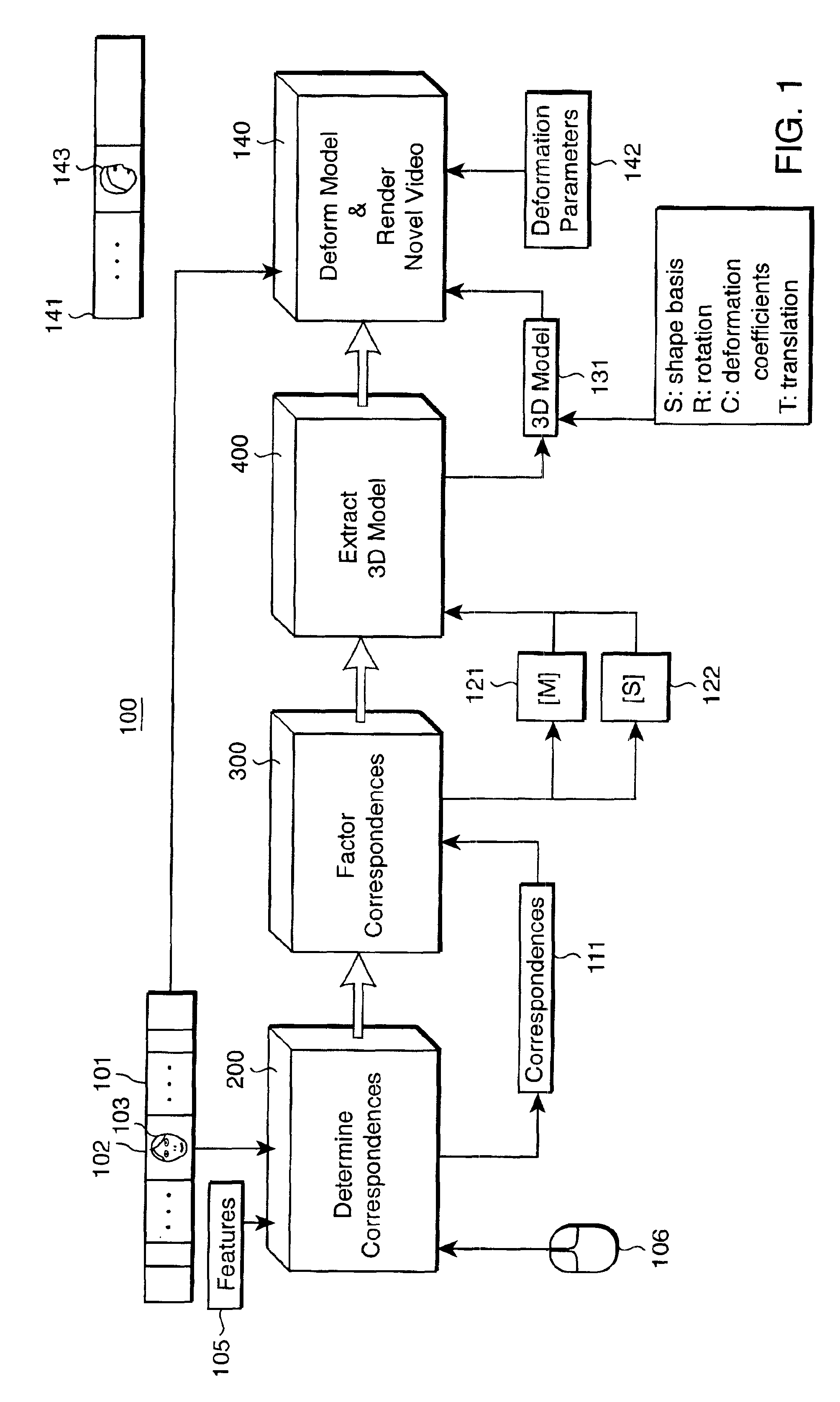Rendering deformable 3D models recovered from videos
a 3d model and video technology, applied in the field of computer vision, can solve the problems of not addressing the case of both unconstrained motion and no prior understanding of shape and motion
- Summary
- Abstract
- Description
- Claims
- Application Information
AI Technical Summary
Benefits of technology
Problems solved by technology
Method used
Image
Examples
Embodiment Construction
Method Overview
FIG. 1 shows a method 100 according to my invention. The method 100 recovers a non-rigid 3D shape and motion model 131 of an object or a scene directly from an input video 101 obtained by a camera. For example, the video is of a “talking head”103 seen face on. Techniques and machinery for acquiring images by video or movie cameras are well known.
First, a reference image 102 is selected. The reference image 102 can be any image in the video that is consistent with the general shape and appearance of the object of interest throughout the video, for example, the middle image. Correspondences 111 are then determined 200 for a set of features 105 of the object in each image of the video.
The features 105 can be selected manually or automatically. For example, a pointing device 106 can be used to “click” on a relatively small number of features in the reference image 102. The number of features depends on the desired amount of detail in the final 3D model. For faces, 80-100 ...
PUM
 Login to View More
Login to View More Abstract
Description
Claims
Application Information
 Login to View More
Login to View More - R&D
- Intellectual Property
- Life Sciences
- Materials
- Tech Scout
- Unparalleled Data Quality
- Higher Quality Content
- 60% Fewer Hallucinations
Browse by: Latest US Patents, China's latest patents, Technical Efficacy Thesaurus, Application Domain, Technology Topic, Popular Technical Reports.
© 2025 PatSnap. All rights reserved.Legal|Privacy policy|Modern Slavery Act Transparency Statement|Sitemap|About US| Contact US: help@patsnap.com



